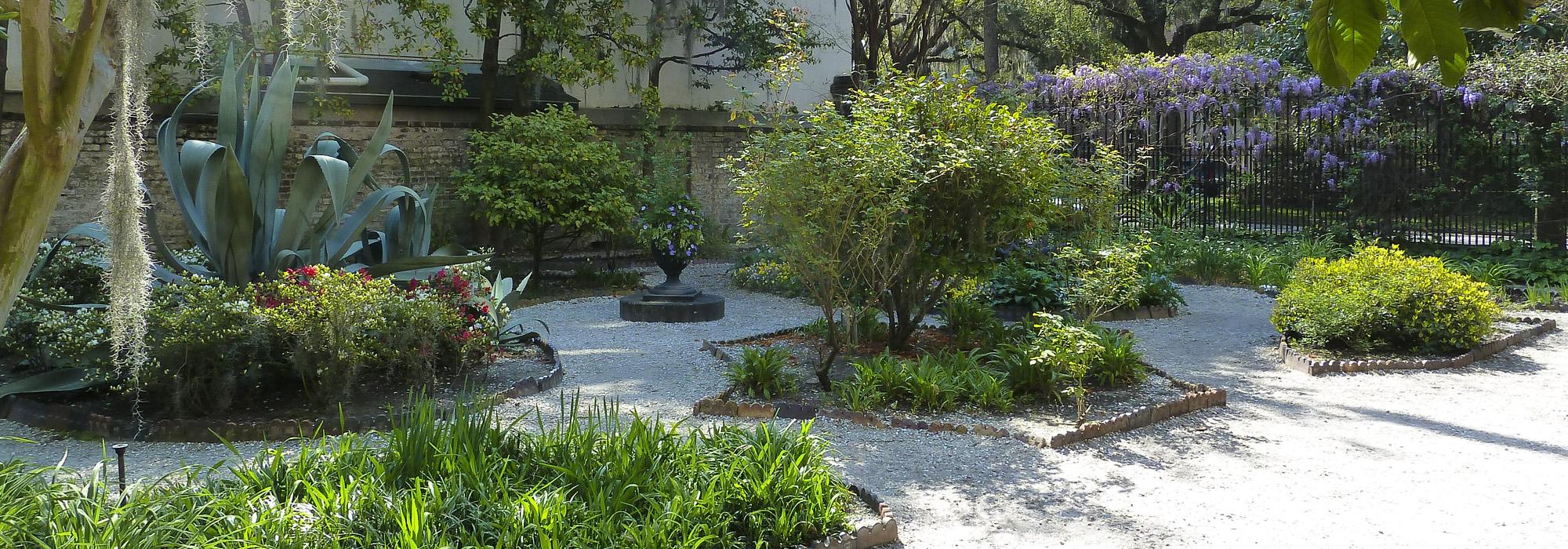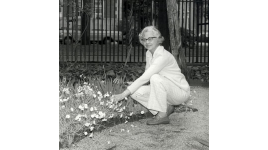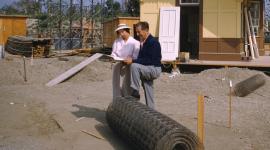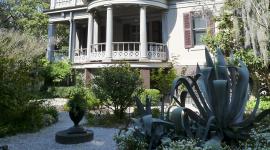Clermont "Monty" Huger Lee Biography
Clermont Huger Lee was born in Savannah, Georgia, in 1914. Her father was a physician and her mother was an avid gardener who was active in the local garden club. After schooling in Savannah and Charleston, South Carolina, she attended Barnard College in New York City where she became captivated with the sciences. She then transferred to Smith College, in Northampton, Massachusetts, eventually deciding to major in landscape architecture. After completing her undergraduate degree, she attended the Smith College Graduate School of Architecture and Landscape Architecture (formerly the Cambridge School) near Harvard University in Cambridge, Massachusetts, earning her M.L.A. in 1939. Although at this time, Harvard faculty promulgated Modernist Bauhaus architecture, Lee always preferred the traditional, less severe landscape styles.
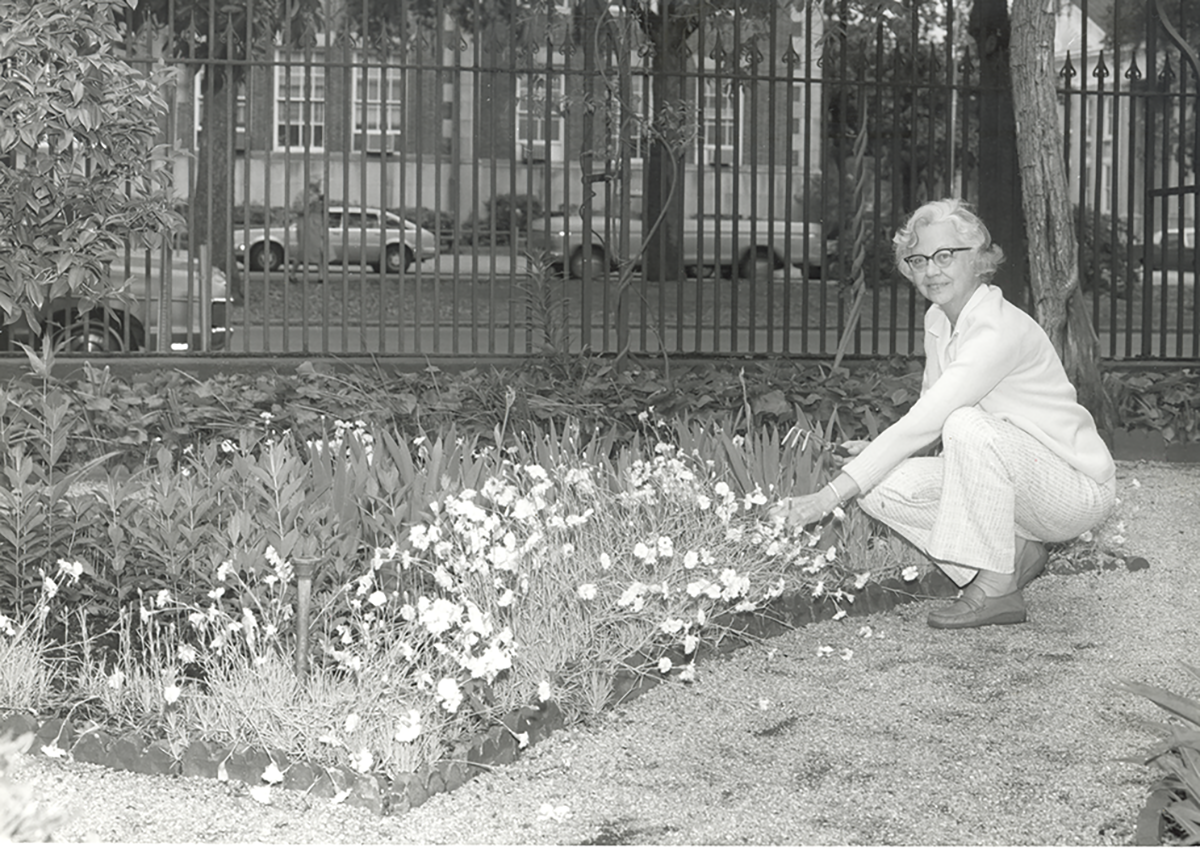
During the Great Depression, Lee returned to Savannah looking for employment. She realized that government work would likely be the most fruitful possibility because government contracts specified degreed personnel. The U.S. Housing Authority (later the Federal Housing Authority) employed architects who could select their own landscape architects. During World War II, Lee become an assistant to Talmadge “Bummy” Baumgardner, a landscape architect associated with the Sea Island Company. While working there, she planned landscape designs and supervised planting operations for many federal housing projects in Savannah and Brunswick. Because of wartime labor shortages, she noted on one occasion that she had a work crew consisting of fifty African-American women and one male tractor driver.
Lee's interest in historic gardens began in the 1940s, when, at the request of a family friend, she drew plans for a small garden at Hofwyl-Broadfield Plantation, in Brunswick, Georgia, based on circa 1910 photographs. In 1944, she made measured drawings of ten Victorian-era gardens in Savannah for Laura Bell and the Georgia Historical Society. She later researched antebellum plants to develop a planting plan for the formal garden of the Andrew Low home newly purchased by the Georgia Chapter of the Colonial Dames of America. She researched antebellum plantings and used the Garden Club of Georgia’s 1933 book Garden History of Georgia, 1733-1933, as references to install the most authentic garden possible. In 1949, Lee left the Sea Island Company to establish her own practice, thereby becoming the first female professional landscape architect in private practice in Savannah.
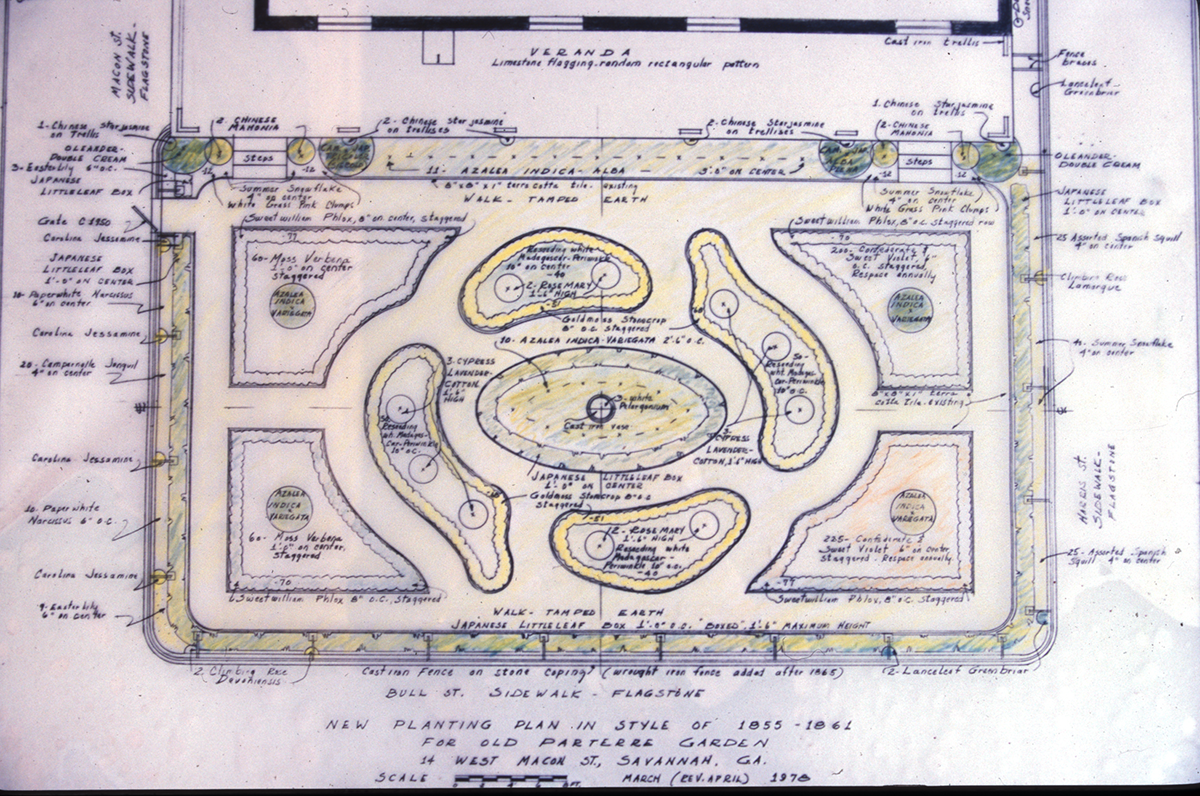
In the early 1950s, Lee began her long and continuing involvement with historic landscapes. Despite the simplified Colonial Revival viewpoint of historic gardening that was in favor at the time, Lee did extensive research to provide an accurate reproduction of a 150-year-old landscape for the Owens-Thomas House on Oglethorpe Square in Savannah. Later, her appropriate design and planting plans for historic buildings in the city included the Juliette Gordon Low Birthplace, Andrew Low House, and Green-Meldrim House. Elsewhere in Georgia, Lee consulted on landscapes for the Chief Vann residence near Chatsworth and the New Echota Cherokee Capital near Calhoun for the Georgia Historical Commission.

From 1951 to 1972, Lee worked with Mills B. Lane, Jr., former president of the Citizens & Southern Bank, and his wife to develop landscapes for their business of purchasing and renovating historic homes in the northeast section of Savannah. She also worked with the Lanes to develop plans for the renovation of five Savannah squares: Green, Madison, Troup, Warren, and Washington. Her designs to preserve the sanctity of the squares brought her into conflict with the city, which wanted drive-through lanes for emergency crews and buses crossing the middle of all squares. To address the problem of the turning radius required by the buses, the city adopted Lee’s suggestion that the curves of entry into the squares be rounded. In addition, efforts were made to eliminate unattractive structures in the squares such as utility poles and concrete walks. Lee’s strong, simple designs used variations in materials and ground forms to give each square a unique character.

In addition to becoming one of the few women in landscape architecture in Georgia, Clermont Lee also worked for the recognition of her profession. The American Society of Landscape Architects (ASLA) began in 1899 with only one woman, New York’s Beatrix Farrand, among its founding members. Clermont Lee joined the ASLA in 1950, and later worked with Hubert Bond Owens, head of the Department of Landscape Architecture at the University of Georgia, to establish the Georgia State Board of Landscape Architects. Lee was the fourth landscape architect and the first woman landscape architect to be registered in the state. (Interestingly, the next 125 registrants were male civil engineers, alarmed that certified landscape architects might take their commissions.) Lee served on the board for three years.
Lee remained active in preparing both historic and current landscape and planting plans throughout the remaining years of her life. She also organized independent research and kept a detailed log on blooming times and characteristics of regional herbaceous plants, planning to author a book on the subject. In addition, she pursued personal interests in genealogy, writing and editing several books on her personal family line and those of others in Savannah. In 2002, she wrote The Joseph Alston Huger Family: Their Line of Descent from Daniel and Margaret Pedriau Huger of France and South Carolina.
She was also active in historic associations and commissions, to include preparing the landscape guidelines for the Savannah Victorian District. She served on the boards of Historic Savannah Foundation, the Savannah Public Library, Savannah Science Museum, the Georgia Conservancy, and the Savannah Academy of Lifelong Learning. She held memberships in the Bartram Trail Conference, the Bluffton Historical Preservation Society, the Georgia Historical Society, the Pendleton SC Historic Foundation, the Georgia Botanical Society, and the Savannah Chapter of the League of Women Voters. Clermont Lee died in Savannah on June 14, 2006.
About the Author
Ced Dolder is an Atlanta-based landscape historian and historic preservation consultant with more than twenty years of experience. She is retired from the Georgia Historic Preservation Division.



